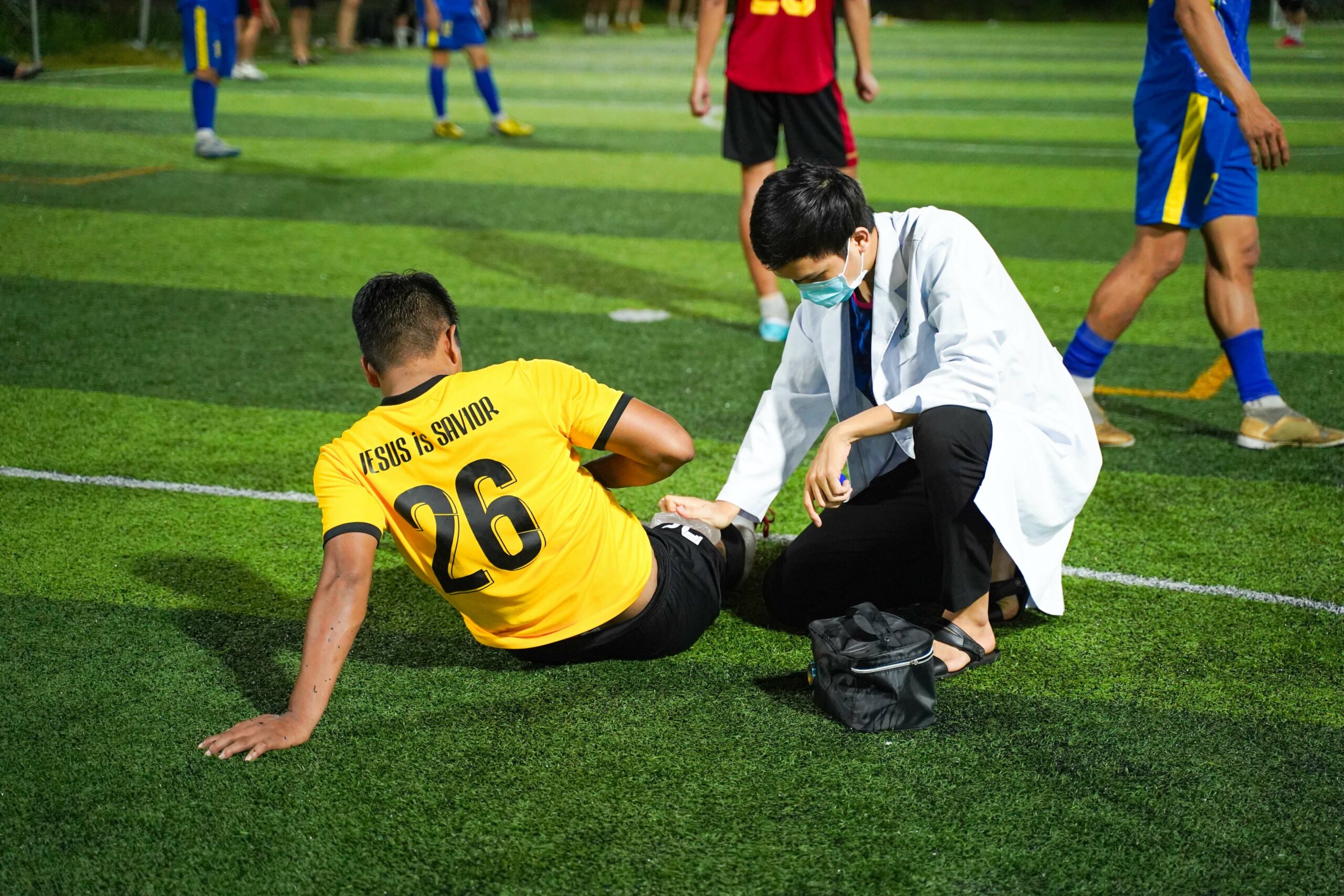The ACL (anterior cruciate ligament) is one of the four main ligaments in the knee joint. It stabilises the knee and keeps your tibia from moving out of alignment with your femur.
What Is An ACL Tear?
Some people report a popping sound at the moment when they experience an injury that ruptures the ACL. A torn ACL can cause immediate and severe pain and rapid swelling. It may be difficult to stand, as your knee might buckle under your weight. Your knee might also develop bruising and it may be sore to touch. It could be difficult and painful to move your knee joint, impairing your mobility.
Although the bruising and pain may subside, an unstable knee joint can cause long-term damage if not treated properly.
What Causes An ACL Tear?
ACL tears are often associated with athletes or people who regularly engage in sport or high-impact exercise. The reality is, however, that anyone can tear their ACL, regardless of age or activity level. Injuries to the ACL often happen as a result of a sudden stop or a change in direction, twisting the knee out of alignment while the foot is planted on the ground. These types of non-contact injuries are the most common cause of an ACL tear.
The ligament can be damaged by contact injuries when the direction of the knee is changed suddenly and with force - such as in a sport-related collision or a car accident.
The repetitive stress associated with overuse might also damage the ACl, though this usually happens over a longer period of time and it is less common than acute injuries.
How Is An ACL Tear Diagnosed?
Your doctor will ask about your medical history and how the injury happened. They will physically examine your knee to check the range of motion and to look for signs of swelling or tenderness around the joint. Specific tests, such as the Lachman test, anterior drawer test or pivot shift test may be used to assess the stability of the knee. The doctor might request medical imaging if they deem it necessary after the tests.
The Lachman Test
In the Lachman test, the doctor pulls on your upper leg while keeping the lower leg stable to see how much your tibia moves forward compared to the femur. If there's too much movement, it could be a sign of an ACL tear, and an MRI is often used to confirm the diagnosis.
The Anterior Drawer Test
In the anterior drawer test, the doctor stabilises your upper leg and pulls your lower leg gently towards them, checking for any excessive forward movement of the tibia. Normally, there should be minimal movement, but if your ACL is injured, the tibia might move too much, indicating a tear or strain.
The Pivot Shift Test
During the pivot shift test, the doctor holds your foot and knee, applying outward and rotational force while slowly bending your knee. If there's an ACL tear, the examiner will feel a sudden "shift" or "clunk" as the tibia moves abnormally compared to the femur. This test is highly sensitive and specific for diagnosing ACL tears.
Medical Imaging
Medical imaging techniques, such as X-rays and magnetic resonance imaging (MRI), can provide a more detailed view of the knee and help confirm the diagnosis of an ACL tear. X-rays can rule out other potential injuries, such as bone fractures, while an MRI can show the extent of the ACL tear and identify any associated injuries to other structures in the knee, such as the menisci or collateral ligaments.
How Is An ACL Tear Treated?
How your ACL tear is treated depends on how bad the injury is, how healthy you are overall and your goals for mobility.
For people who do not rely on sport or intense activity for their lifestyle, nonsurgical treatments such as physical therapy, braces, and rehabilitation exercises may be all that is needed. These treatments will help to stabilise the knee, reduce pain and swelling, and improve mobility and strength, but they will not repair the ligament.
For athletes or people who need reliable high-level knee function for their daily lives, surgical intervention may be recommended, where the ligament is either reconstructed or repaired. Reconstruction involves using a graft to replace the torn ligament, while repair involves reattaching the torn ligament to the bone.
Non-surgical interventions are useful for people who undergo surgery as well. After surgery, patients will undergo a period of rehabilitation that includes physical therapy and strengthening exercises. It can take several months to recover. Rehabilitation involves gradually increasing activity levels while monitoring the knee's healing progress.
When You Have An ACL Tear
Tearing your anterior cruciate ligament (ACL) can cause pain, swelling, and knee instability, which means that your knee might be unable to bear your weight and it could be difficult to move around.
Although anyone can suffer an ACL tear, athletes in sports that involve sudden stops, changes in direction, and jumping are more susceptible to injury.
An ACL tear will not heal itself and it can cause long-term complications if left untreated.


 71–75 Shelton Street, Covent Garden, London, WC2H 9JQ
71–75 Shelton Street, Covent Garden, London, WC2H 9JQ +44 (0) 20 3376 1032
+44 (0) 20 3376 1032



